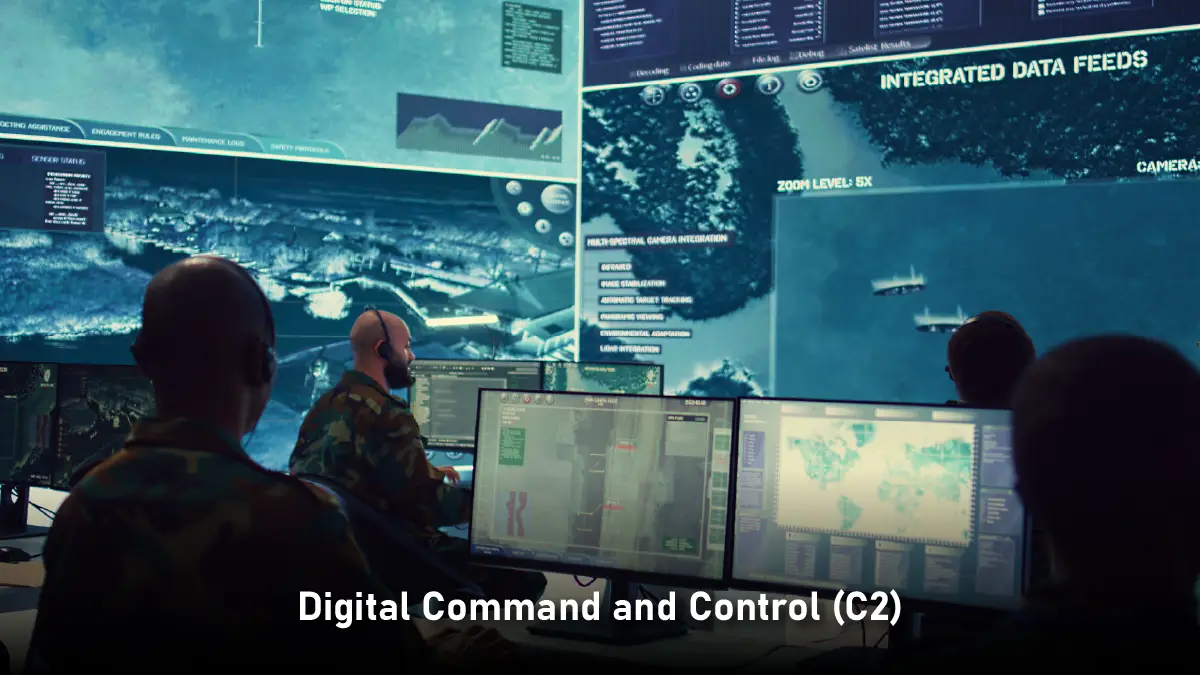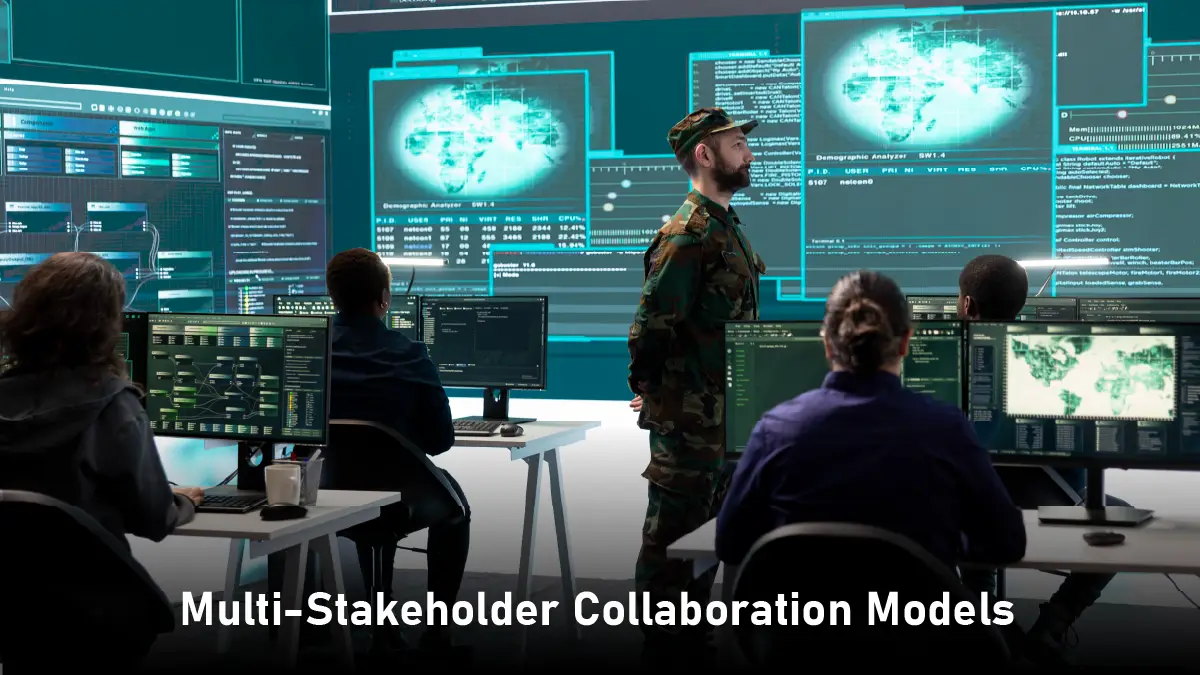The traditional frameworks for military readiness are being challenged by the speed and uncertainty of modern threat environments. Conventional planning cycles and platform lifetimes are no longer sufficient to address a range of emerging challenges from cyber intrusions to autonomous systems. As a result, defense organisations worldwide are moving towards more agile defense strategies prioritising responsive, modular and technology-integrated readiness models.
This article explores the evolving concept of military readiness, the operational limitations of legacy systems and the strategic drivers for more adaptive, modular and real-time defense capabilities.
Redefining Readiness: From Static Posture to Adaptive Response
Military readiness has been defined by force size, equipment availability and the ability to deploy within set timeframes. But the threat has changed. Traditional kinetic engagements are now accompanied by disinformation campaigns, cyber-attacks, electromagnetic spectrum operations and real time disruptions to satellite or communication networks. This shift requires moving from static preparedness to dynamic response capability.
Also Read: The Life Cycle of an Electric Vehicle: From Mining to Recycling
Agile defense frameworks focus on operational flexibility, rapid integration of new technologies and distributed decision making. They’re not just about material readiness but also digital infrastructure, information superiority and operating in contested multi-domain environments. The emphasis is shifting from scale to speed and from massed forces to networked coordination.
Strategic Drivers for the Shift
Several global and regional factors are accelerating the transition to agile defense models:
- Technology Disruption: The pace of dual use technologies, particularly AI, quantum computing, autonomous systems and cyber warfare tools has reduced the time between capability emergence and battlefield relevance. Adversaries can adopt and deploy new tools with fewer institutional constraints, necessitating rapid adaptation.
- Geopolitical Volatility: The rise of near peer competition, hybrid warfare tactics and contested domains (space and cyber) has exposed gaps in deterrence models. Defense strategies must account for ambiguity, uncertainty and rapid escalation potential.
- Force Multiplication Through Digitization: Modern military effectiveness is increasingly dependent on networked systems, real time data processing and sensor to shooter integration. Being able to process and act on information faster than the adversary is becoming a key factor of operational superiority.
- Budgetary Constraints and Operational Efficiency: With defense budgets tightening we need to optimize resource allocation while maintaining a credible deterrent. Agile allows us to have force structures that scale and more efficient use of people and assets.
Agile Defense Infrastructure Components
Moving to an agile defense posture requires investment across multiple layers of infrastructure. Key areas of development are:
Modular Force Design
Agile forces are reconfigurable units that can deploy rapidly across multiple environments. They often have integrated multi-domain capabilities and are supported by interoperable tech that allows seamless collaboration with allies.
Digital Command and Control (C2)

Next-gen C2 systems prioritize adaptability over hierarchies. They use real-time data ingestion, AI decision support and distributed ledger tech to speed up planning cycles and decentralize execution. This reduces decision latency and increases operational agility in dynamic threat environments.
Continuous Training and Simulation
Maintaining readiness in dynamic threat environments requires continuous and adaptive learning processes. Defense organisations are integrating live, virtual and constructive (LVC) simulations to train personnel on emerging threats. These include real time feedback loops, adaptive learning algorithms and synthetic environments to get mission ready without increasing operational risk.
Resilient Supply Chains and Logistics
Agile defense also means being able to operate in contested or disrupted environments. This means developing logistics systems with built in redundancy, predictive maintenance and flexible sourcing strategies, especially for munitions, fuel and critical components.
Case Applications: Evolving Readiness Models
Several defense organisations are already adopting agile frameworks:
- United States: The U.S. DoD is implementing Joint All-Domain Command and Control (JADC2) – a strategy to enable seamless coordination across land, air, sea, space and cyber.
In June 2025, as part of Sea Breeze 2025 in the Black Sea region, the U.S. Air Force embedded JADC2 tools to test joint command concepts integrating ships, aircraft, and special operators through secure cross-domain networking.
- European Union: NATO allies are working on multi-domain rapid response units that prioritise interoperability, rapid force projection and data centric coordination.
In March 2025, the EU conducted MILEX 25, a large-scale crisis management exercise in Hungary with 13 member states, deploying up to 5,000 EU Rapid Deployment Capacity (RDC) troops, coordinated via the Military Planning and Conduct Capability (MPCC) based in Brussels, and supported by Eurocorps at Pápa Air Base. This exercise tested strategic deployment agility across multiple theaters from initial alert to field maneuvers under realistic crisis conditions.
- Asia-Pacific: In response to shifting maritime security dynamics, regional players are investing in modular naval platforms, unmanned systems and AI enhanced surveillance to maintain flexibility in theatre level engagements.
At Aero India 2025, drone manufacturer ideaForge launched its latest generation of modular UAVs including NETRA 5, SWITCH V2, and a logistics-focused concept drone. These systems are built for GNSS-denied navigation, AI-powered target tracking, anti-jamming operations and autonomous cargo delivery, enabling the shift towards modular, AI-integrated and logistics-resilient agile defense.
These examples show the operational shift away from traditional force readiness metrics to adaptive outcome focused readiness standards.
Governance and Policy Implications
Moving to agile defense frameworks requires corresponding changes in governance and policy. Traditional acquisition cycles with long development times and rigid specs are not suited to rapidly changing threat environments. Defense agencies are moving to more flexible procurement models that favour iterative development, modularity and performance based contracting. Governments are also redefining their readiness metrics. Instead of measuring readiness by inventory levels or deployment capacity, new models are including cyber resilience, data integration readiness and decision cycle velocity. This allows for a more accurate reflection of actual operational capability in complex high tempo environments.
Defence ministries and government policy bodies are updating policy to better cover dual use technologies and rapidly changing threat environments. Private sector innovation is outpacing traditional defence R&D so defence ministries are partnering with tech companies, startups and universities to accelerate capability development. This way we get agility and regulatory oversight and national security controls.
Multi-Stakeholder Collaboration Models

Agile defense can’t be done in isolation. It requires active collaboration across military branches, civilian agencies, industry partners and allied forces. Interoperability is no longer just about platforms or equipment, it’s about data architectures, command structures and shared situational awareness.
Cross-agency integration is becoming more important especially in areas like cyber defense, space operations and critical infrastructure protection. National security strategies are becoming whole-of-government where information flows and coordinated responses cut across defense, intelligence, energy, transport and communication sectors. Internationally, joint exercises, information-sharing protocols and integrated response mechanisms are being formalized to be ready together. These collaborative models not only strengthen deterrence but also the agility of multinational force responses to emerging crises.
Procurement and Technology Integration Strategy
Agile defense requires a rethink of procurement and technology integration. Linear procurement models are being replaced by agile acquisition strategies that allow for incremental capability deployment and rapid upgrades. Modular platform design is being prioritized so systems can evolve without having to replace the whole thing. Open architectures and software-defined capabilities are being emphasized so sensors, analytics tools or communication modules can be added faster. Defense organizations are investing in digital twins and virtual testing environments to test before deployment.
Moreover, continuous integration and delivery (CI/CD) is gaining traction in defense software development so faster iteration cycles and real-time patching. This means defense systems stay adaptive to new threats and can evolve with minimal disruption to operations.
Risk Mitigation and Strategic Redundancy
Agility in defense must be balanced with control, accountability and risk management. With more reliance on digital systems, AI-based decision making and autonomous assets there’s more sensitivity to cybersecurity, reliability and command integrity.
Defense planners are addressing these risks by building redundancy into key operational areas. This includes diversified sourcing for critical components, decentralized communication networks and fallback command paths. Cyber resilience strategies are being enhanced with continuous threat monitoring, zero-trust architectures and robust incident response protocols.
Meanwhile, ethical and legal frameworks are being developed to govern the use of autonomous systems and AI in defense operations. This includes clear rules of engagement, human-in-the-loop requirements and transparency mechanisms for algorithmic decision making.
Future Outlook
Agility in defense requires more than technical fixes, it requires a cultural shift within defense organisations. Command structures, training doctrine and operational planning must all change to support decentralised execution and dynamic adaptation. Everyone at every level must have technical skills but also decision making autonomy and situational flexibility.
Defense agencies are starting to embed agility into their organisational DNA through adaptive learning systems, real time scenario planning and capability forecasting. This cultural and structural change will be key to sustaining readiness in an era of rapid change and strategic uncertainty.
Conclusion
Agile defense is a fundamental rethinking of what readiness means, how we measure it and how we operationalise it. It goes beyond the static models of the past and is a multi-dimensional approach that includes speed, adaptability, digital integration and collaborative resilience.
As threats evolve across physical and virtual domains defense organisations must build infrastructures that can respond rapidly, learn continuously and mitigate proactively. Agile defense is not a temporary fix, it’s the foundation of next generation readiness. For defense leaders, policy makers and industry partners the imperative is clear: build systems and strategies that can move at the speed of uncertainty.




